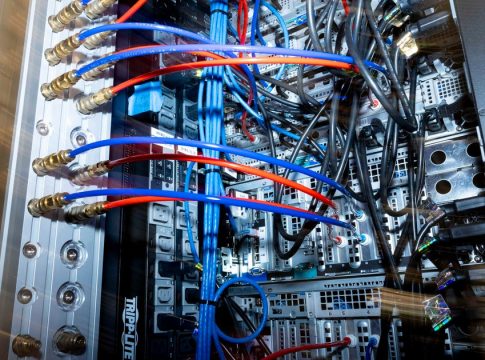The Rising Cost of AI: Data Centers Drive Electricity Demand and Rates
New Jersey residents recently faced alarming news from the state’s public utilities board: a potential electricity bill increase of up to 20% starting June 1. A significant factor behind this hike? The surging demand from data centers, the backbone of the rapidly evolving tech landscape, particularly in artificial intelligence (AI).
The Data Center Boom
As demand for AI, data storage, and enhanced computing services skyrockets, the U.S. is witnessing a boom in data centers. Experts project that electricity demand could soar by 16% by 2029, driven largely by these facilities. According to industry insights from Schneider Electric, the growth of data centers is expected to create unprecedented strain on the national electrical grid, directly impacting consumer electricity bills.
Mark Wolfe, executive director of the National Energy Assistance Directors Association, emphasizes that utilities are under pressure to revamp infrastructure to cater to this explosion in demand, often lacking transparency. This results in rising costs that are disproportionately burdening everyday households, while tech companies often secure favorable deals away from public scrutiny.
The Scale and Consumption of Data Centers
The sheer quantity of data centers in the U.S. has almost doubled from 2021 to 2024, with the highest concentrations found in states like Virginia, California, and Texas. Size matters too, as larger data centers tend to be more energy-efficient. Dave Turk, former deputy secretary of the U.S. Department of Energy, highlights the fact that sophisticated AI models—such as ChatGPT—are particularly power-hungry, with some AI operations consuming ten times more electricity than typical internet searches.
Strain on the Grid and Rising Costs
In 2023, roughly 4.4% of the nation’s electricity was allocated to powering data centers. While not all of this demand is AI-related, the growth trajectory signals challenges ahead. As the energy capacity needs surge, Torsten Sløk, chief economist at Apollo Global Management, anticipates data centers will demand an additional 18 gigawatts of power by 2030—equivalent to the power needs of New York City.
But the challenges extend beyond mere power consumption. Increasing electricity prices are influenced by several factors, including natural gas prices and inflation. Notably, utilities like Dominion Energy are already proposing price hikes that include new rate categories targeted specifically at high-energy consumers, including data centers.
Implications for the Future
Beyond financial repercussions, the fast-paced growth of data centers poses risks to grid reliability. The North American Electric Reliability Corporation recently warned that the speed of data center construction, particularly those supporting high-demand sectors like AI and cryptocurrency, might outstrip the necessary upgrades to power plants and transmission infrastructure. The PJM grid operator has flagged data center demand as a potential contributor to future capacity shortages.
In a world where electricity dependency continues to escalate, the implications for everyday consumers cannot be ignored. As AI technologies reshape industries and demands rise, leaders in the energy sector will need to navigate this increasingly complex landscape—finding a balance that satisfies both technological advancement and consumer affordability.
The ongoing evolution of AI and its infrastructure needs will keep this story developing, presenting a myriad of challenges and opportunities for society at large.

Writes about personal finance, side hustles, gadgets, and tech innovation.
Bio: Priya specializes in making complex financial and tech topics easy to digest, with experience in fintech and consumer reviews.

